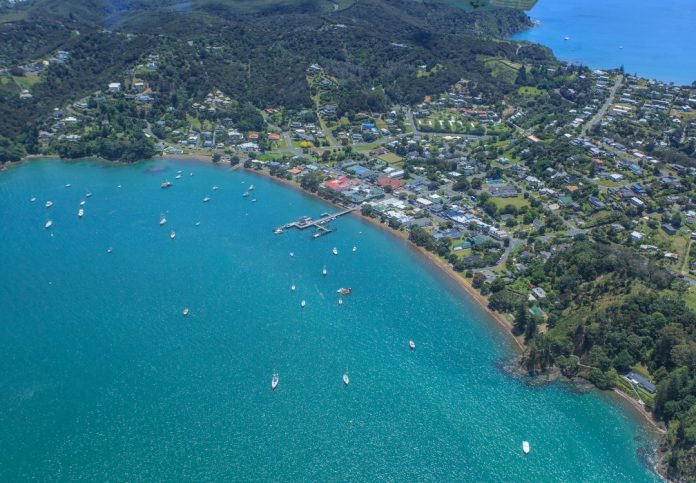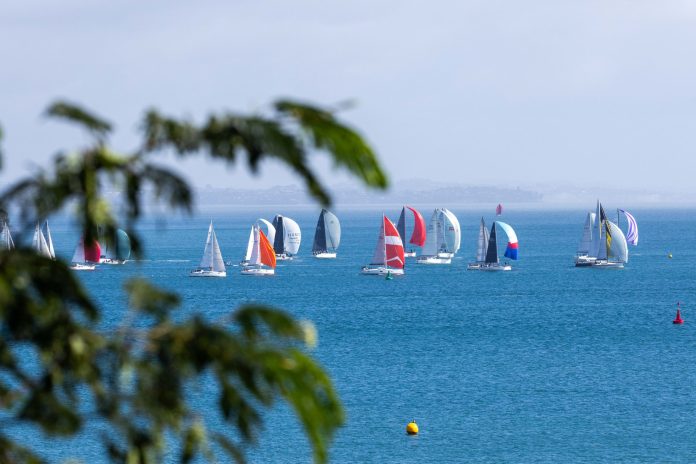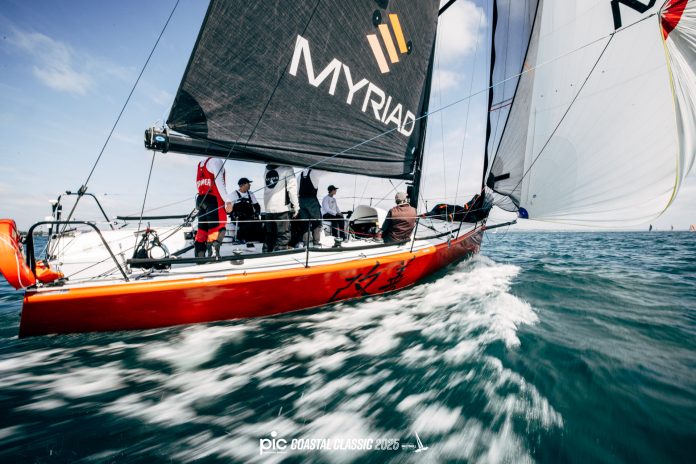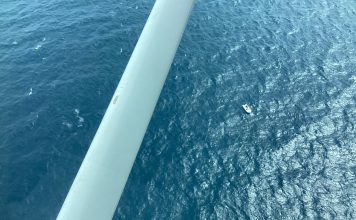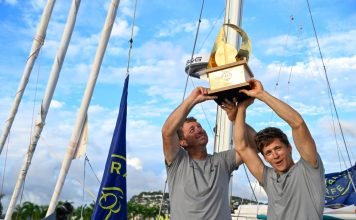The countdown is on, and excitement is building as the 2025 Coastal Classic draws closer. With just five weeks until the fleet lines up off Devonport Wharf, preparations are intensifying across Auckland’s sailing community. From updated safety rules to new race formats, the buzz is unmistakable.
Crews sharpening up
Around the waterfront, you might spot crews drilling reefing manoeuvres, practising man-overboard recoveries, and honing their sail handling. These exercises aren’t just about polish; they’re about survival. At a recent Coastal Safety Clinic, Simon Hull reminded sailors that preparation is everything. His message was clear: those who rehearse thoroughly will spend race day racing, not scrambling to recover from mistakes.
Safety gets an upgrade
This year also marks a significant change in the sport’s safety framework. Yachting New Zealand has introduced a new rule requiring every CAT 3 vessel to carry a GPS-enabled EPIRB registered to the boat. Previously, either a PLB or EPIRB sufficed. While personal locator beacons remain recommended for individual sailors, the EPIRB requirement ensures that if trouble strikes, rescuers receive precise, vessel-specific alerts. It’s a move designed to make offshore racing safer and more accountable.
Rally gains momentum
Alongside the main race, the Coastal Classic Rally is generating plenty of interest.
This relaxed division caters to production and cruising yachts looking for a different way to experience the PIC Coastal Classic. Instead of chasing line honours, it’s about enjoying the trip north in good company, with rally options that let each crew set their own pace.
The updated two-day format allows boats to start from their home ports or join shorter sections of the course, adding flexibility that suits a wide range of sailors. The response so far has been strong, showing there’s real demand for a more accessible and social adventure. Organisers are now finalising logistics, with entries soon to open through the Top Yacht system. For many, the Rally promises the same spirit and camaraderie of the Coastal — just with a more relaxed approach.
Final clinics on the horizon
Knowledge is just as crucial as seamanship, and the Squadron will soon host two final prep sessions. On Tuesday 7 October, the Boat Prep and Safety Clinic will explore night sailing, onboard communications, and course planning. Two weeks later, on Monday 20 October, the Forecast and Tactics Clinic will look ahead to weather systems and racing strategy. Both are expected to draw strong crowds keen to sharpen their understanding before the big start.
Fleet taking shape
Already, 49 boats have committed to the challenge — 43 monohulls and six multihulls. The line-up ranges from powerful 50-foot racing machines to nimble two-person sportsboats, alongside sturdy cruiser-racers and classic designs that remain part of the race’s fabric. The multihull fleet adds another layer of spectacle, with sleek 8.5s and larger offshore-capable designs expected to provide plenty of pace.
Across the fleet, the makes and models are as varied as their home clubs, which span Auckland, Northland, Bay of Plenty and beyond. From modern European performance yachts to Kiwi-built Ross and Elliott designs, the entries highlight the depth of New Zealand’s sailing scene. Whether racing under the banner of RNZYS, RYC, SSANZ, OCC, or smaller coastal clubs, the diversity of the competitors is a reminder of the Coastal’s broad appeal.
The build-up continues
From the outside, it’s clear that the Coastal Classic is more than just a race — it’s a ritual. The new safety standards, the Rally’s growing popularity, and the strength of the entry list all point to an event that captures the imagination of sailors and spectators alike. With only five weeks left, anticipation is running high for another memorable dash north.








